Words by Ian Browning
Photos by Christian Kerr
“Tell me how someone shits on a wall?” Nestor, who works for the New York City Department of Parks and Recreation, says to me between bites of a ham-egg-and-cheese on a roll. The first Parks employee at Coleman Playground is supposed to unlock the bathrooms upon arrival, but the men’s room is out of service. Nestor is the second person from Parks to show up — a lawnmower driver is sitting in the bleachers by Market Street, waiting for a lawnmower to be dropped off — and there is a piece of paper that reads “Bathrooms OOS” taped to the door of the bathroom. Nestor dances around what’s actually wrong in there, but the situation is severe enough that a second Parks employee reiterates that it is closed before I can say a word to him.
Nestor grew up in Spanish Harlem, skating a bit in his youth before moving to the west side, where he raised a family (including a son who skates.) He has driven limos, buses and trucks in his 59 years, but now he works for Parks, spending a few days of his work week cleaning at Coleman. The park includes a somewhat outdated playground, a baseball diamond, racquetball courts, a crusty hubba leading to the bathroom building / Parks equipment shed, and the Lower East Side Skatepark.
Parks is responsible for over 30,000 acres of land in the five boroughs, which is just shy of 15% of the city. They oversee everything from ice rinks to beaches, and a growing sliver of that land is now covered in skateparks.
L.E.S. as we know it today was built ten years ago this summer, one of eight concrete parks built in the city between 2011 and 2013, missing Staten Island entirely. Having multiple places where kids could skate for six hours straight laid groundwork for New York to establish itself as a viable third option for skaters trying to make waves in an industry that had traditionally focused most of its resources and attention between San Francisco and San Diego.
Today NYC Parks lists 38 skateparks on its website. Throw the varying degrees of D.I.Y. spots like K Bridge or Mosquito Beach, the ones on state park land (which Parks doesn’t touch,) the indoor parks, and a luxury high rise near Columbus Circle that lists a private mini ramp among its amenities — and the pile of places constructed for skateboarding in New York is close to 50 spots tall, which is not bad for a city that was once viewed by skateboarding at large as a party-fueled black hole for productivity on the board.
If you subscribe to the idea that the Civic Center is the metaphorical hub of a city, it only makes sense that L.E.S. would be holy ground for New York City skateboarding. For three kids that live in Parkchester, Gowanus and Sunnyside to link up to skate, it’s a reasonable meet-up spot, and if you’re trying to throw a demo or contest, it is also well suited to handle the crowds. But most importantly, it also has about 30 trash cans, and Nestor needs to get to work on emptying them.
Like everyone and everything else in New York, the land underneath the Manhattan Bridge has gone through multiple phases: an episcopal church, a graveyard, condemned buildings, a compost site, basketball courts, and the location of a music video for a song by Shaq and Fu-Schnickens. The bodies were exhumed, Shaq does commercials for car insurance now, and a Department of Transportation project that used the courts for a staging area in the nineties came earmarked with money for improvements to the park upon completion. Community Board 1, who makes decisions about land use and budget priorities for most of the parks downtown, had been hearing about skateboarding since the mid-90s. They authorized the purchase of a few pieces of prefab skatepark obstacles, and just like that, there was a skatepark under the bridge.
The “old” L.E.S. Park • 📷 Photo via Steve Rodriguez
As is the case with most prefab parks, it wasn’t great, and then got worse. The ground was uneven and prone to flooding. A botched sealing attempt left it covered in a tar that left permanent streaks on any piece of clothing that skidded across it. Steve Rodriguez, founder and partner in 5Boro and owner of Sticks and Stones, had been leading advocacy of the Brooklyn Banks to CB1 for years, and was in the process of pitching Hunter Muraira at Nike SB to help preserve what was left of the Banks. The Department of Transportation stepped in front of that plan and posted up on the Banks, saying that they needed the land to store equipment — where things remain 12 years later. The two pivoted to the next best thing: giving the skatepark underneath the Manhattan Bridge a full renovation, which was exactly the kind of project that Muraira could bring to Nike’s NYC Community Impact Team to get some extra capital, bolstering the check to half a million dollars.
“The problem is, if you give $500,000 to the city, it’s worth $50,000. You would have gotten a new pyramid, because of all the unions, and how things need to be bid out,” Rodriguez said. After securing $30,000 more from The Skatepark Project (then the Tony Hawk Foundation), The P Rod Foundation, and donated materials and labor from California Skateparks, he used the Adopt-A-Park program, which Parks uses to accept large donations. “The money came to me as a grant,” he explained. “I immediately gave it to a nonprofit called Architecture For Humanity, who hired California Skateparks to build the skatepark. It was just a build fee, because I donated the design. So then, two months later, we opened it for Go Skate Day [2012].”
Remodeled in June 2012 • 📷 Photos via NYSkateboarding
Public-private partnership is still informally in place at the park today, where Nestor changes a bag in the replica NYC wire trash can that Adidas sent to Labor with Tyshawn Jones’ shoes. It got turned over and lined with a bag by a Parks employee after a best trick contest, and has been in use ever since. Nestor and his coworkers spend a large chunk of every day at Coleman sweeping up trash, in rain, sleet, snow, and sun — like mail carriers delivering empty Gatorade bottles to a pile of black bags on a sidewalk. “Other people at this job don’t want to clean the park, because they say they do it for nothing,” he says. The litter never abates, but it gets worse in the warm weather. “They try, and people don’t appreciate it.”
While cleaning litter is among the largest tasks that Parks handles to keep the park in order, there are a handful of others that need work: “The area around the skatepark requires graffiti mitigation multiple times a week. The fencing around the skatepark requires monthly maintenance due to the heavy use of the park,” according to an email from Parks District Manager, Jamil Phillips. When I ask about whether there’s a trick to unclogging the drain near the steps, he points out that it receives seasonal maintenance, and that Parks is actively seeking funding to replace the draining system. He does not comment on whether replacing the drain would require chiseling through the existing skatepark.
Phillips also mentions that the plywood ramps are more prone to wear and tear, which means that the wooden spine that showed up in the last few years has joined the Adidas garbage can in being unknowingly adopted by Parks.
The concrete park itself doesn’t require much maintenance. “If it’s a cement park, there isn’t too much to do beyond resealing the concrete, which they recommend annually, and keeping an eye for cracks,” according to Derrick Dykas, who turned a D.I.Y. concrete hobby into a nonprofit called Community Push, overseeing the construction of a 21,000 square foot skatepark in Detroit, and eventually landing a job with Detroit’s Parks Department.
There are a healthy amount of pockmarks at either end of most of the obstacles at L.E.S., a handful of cracks that are small enough that your wheels don’t even click when you roll over them, and the pool coping grinds a lot different than it did in 2012. But all in all, things look pretty close to the same they did a decade ago, except for the torrent of graffiti that has covered the bridge supports and parts of the park. District Manager Phillips said that Parks removes graffiti multiple times a week, which means that either there is a massive backlog of bubble letters to get through, or that the post-lockdown painting boom is just more than Parks has the bandwidth to handle. It certainly is for Nestor. “You see the light poles?” he asks. “I must have painted them like 50 times. I just stopped because they keep spraypainting them. Maybe if I painted it neon, they’d stop.”
You can count the alternating layers of spray paint, and the thick black paint Nestor uses to cover it like rings on a tree. As the decade has gone by, the park has also raised several micro-generations of kids. “It was sick to watch Tyshawn grow up,” said Naquan Rollings, who is currently one of the most active filmers in the city. He’s talking about Tyshawn Jones, New York City’s first Skater of the Year. Jones grew up as the concrete parks were popping up around the city, and cut his teeth in them, starting with River Avenue park in The Bronx. “I went to high school right by LES,” Rollings said. “I would skate there all the time. There’d be moments where I would sit down and watch Tyshawn skate, because he would violate the park.” Others more literally violated the park, like the bikers that would mob in and ride around until a fight broke out.
Hand to hand combat is a storied tradition at L.E.S., but according to NYPD records from the last eight years, the crime they handle most frequently at the park is grand larceny (theft of goods that are worth over $1,000, like an HD camera, or the type of shit that people leave on the steps while doing fashion shoots in the park.) That said, according to Borough Commissioner Castro, the most frequent complaint Parks hears from the community is over the park being used after hours.
Rollings was around one of the times the police started to crack down on skating after dark: “It was a bunch of cops just waiting outside for 10 o’clock, and then they all came in. It was like they were playing tag with us, or manhunt. It looked crazy. It was deadass 20 or 30 people still in the park, and they were chasing us around. Then, the cop car drove in the park where the gaps are. We were hopping the fences, and people were stepping on each other to get out.”
The NYPD may occasionally use noise complaints as an excuse to flex, but otherwise, Parks choreographs a delicate waltz of departments to keep the park in order. “The Parks Department has everything: plumbing, electricians, and carpentry,” Nestor explains. He’s hoping to climb the ladder to a job behind a wheel at Parks— — maybe be a part of the fleet of Parks garbage trucks, or be the one dropping the lawnmowers off on the sidewalk next to Market Street. There is no skatepark desk at the agency though.
Instead, employees ranging from seasonal park workers to landscape architects within the department are learning the ins and outs of public skateparks, and figuring out what works best as they go, occasionally
relying on skaters like Rodriguez for help. He has designed multiple parks in the city, including 181st, Astoria Park, Fat Kid, and River Ave.
Patricia Clark, the landscape architect who was responsible for the overall design of River Ave, had never designed a park with intentionally skateable space in it when the project landed on her desk — much less designed a skatepark. She was intrigued by the plaza-style design: “I was brought the project as a skateable public open space.There’s significant grade change on the site,” she explained. “It’s seven or more feet higher on the 157th Street side than the River Avenue side. So from a landscape architecture perspective, I needed to make it navigable. How do you move people through the space with an accessible route and a non-accessible route? I created that framework with Steve,” Clark said. “I gave him this overlay of pedestrian movement, and he formed the rest with the ledges, the rails and the bowl. There’s also a lot of accommodation to the MTA, and these various back and forths with all the other agencies that you accept to use in that space.”
Rodriguez also mentioned the concessions to inter-agency tetris: “Think about Fat Kid: if you skate around that park, you’re like, ‘goddamn there’s a lot of room.’ All the hips are steep. What you don’t know is that when they had me design it, they gave you a piece of paper with the shape of the space. Then they put this other thing over the top showing where you can’t build, because cherry pickers need to do three-point turns to be able to access the bridge. And then, for the same reason, most obstacles can’t be more than three-feet wide, which is why the banks are so steep. But you don’t want to complain, because you’re getting a skatepark.”
At the end of the day, in spite of the workarounds required to accommodate construction equipment, sheer momentum appears to be carrying sanctioned skateboarding forward in a city whose marquee spot for a few post-9/11 years was a paved “baseball diamond” with some cracks to try and flip your board over.
“The kids are lucky. When I was coming up skating, all the older dudes were like ‘you guys got it so good,’ and now I feel like the old dude,” Zered Bassett said. “There’s parks everywhere.” Bassett might be the longest tenured active pro skater in New York, but he got a lot of his early footage on the road. Skating in the city started to creep into the spotlight during the Brown Pants Renaissance of the mid-aughts, and it got progressively brighter as concrete parks began to multiply at the start of the 2010s. The industry took notice: “I remember a few people or teams would come through every summer, and now it’s a lot of people from California moving year round,” Bassett said. “I feel like the bigger companies all come through New York, get apartments or Airbnbs for the summer. And all the skateparks? It’s fucking popping.”
As the sun climbs higher above the bridge and the temperature creeps up, Nestor stops for a Newport. He tells me a story of a day working at Seward Park, where he hooked two teenage boys up with bottles of water after telling them their smoke session was blocking the women’s bathroom entrance. It’s all about showing that it’s worth being courteous to the people and places around you, a lesson he’s learned along the way. “When the pandemic hit, it fucked me up. It fucked up a lot of people. I’ll tell you the truth, I didn’t even want to do this, but it’s good to get out of the house,” he said, making his way towards the trash cans on the red steps. “I just take my time. I know I’m making a difference.”



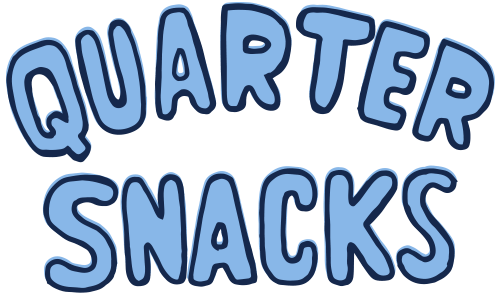


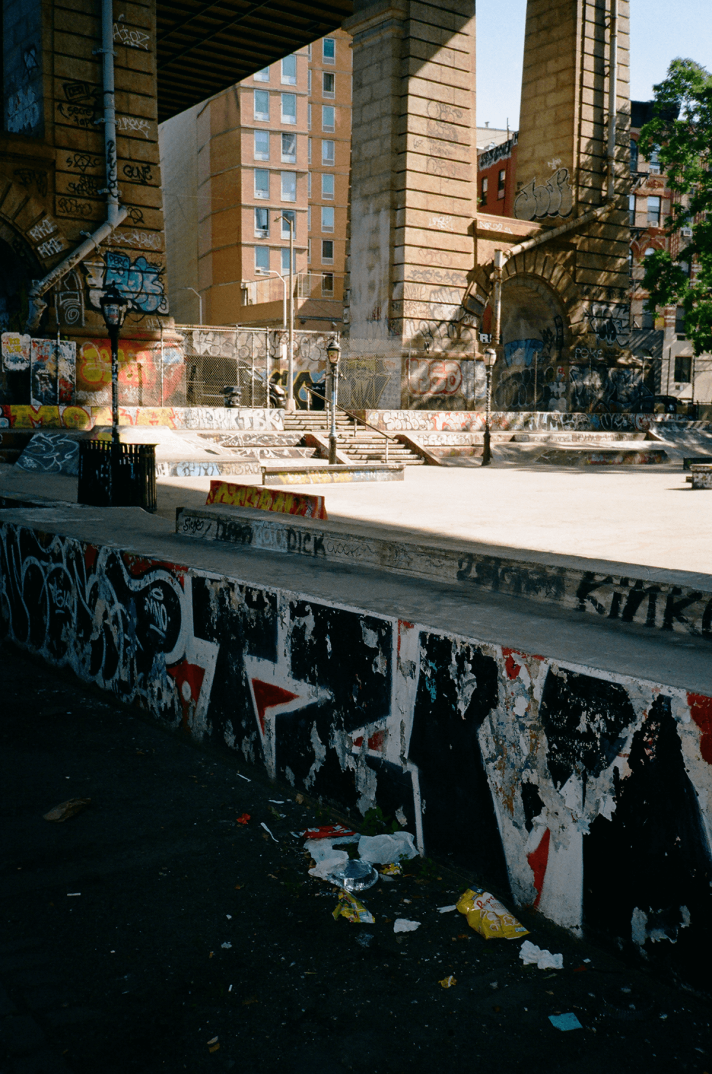
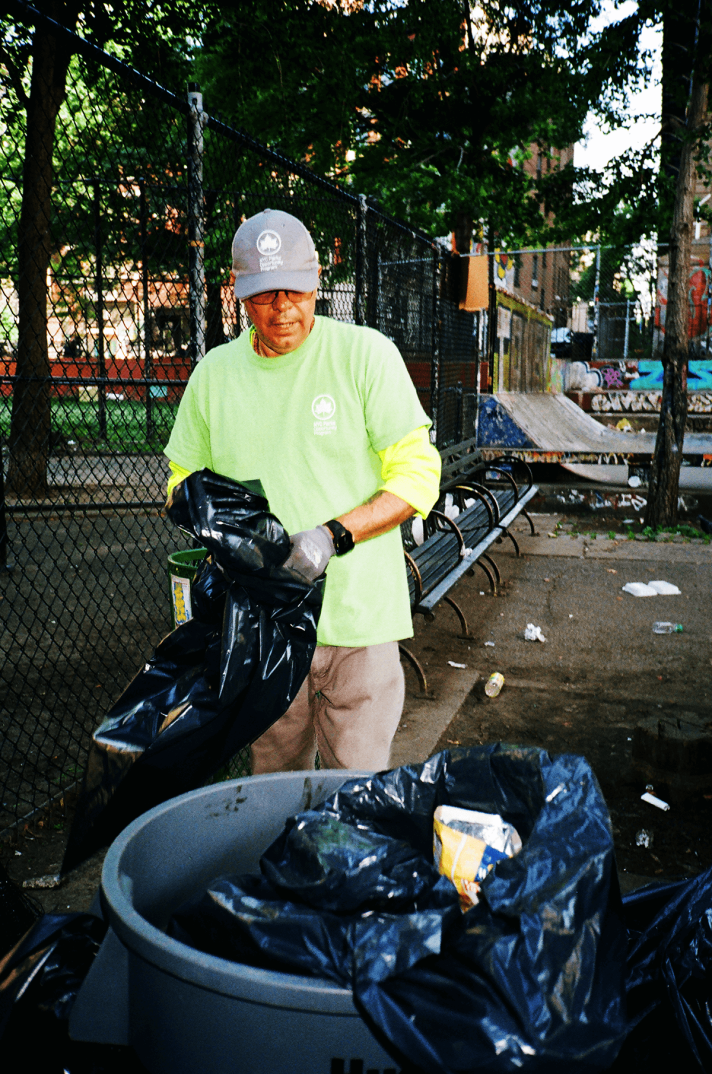

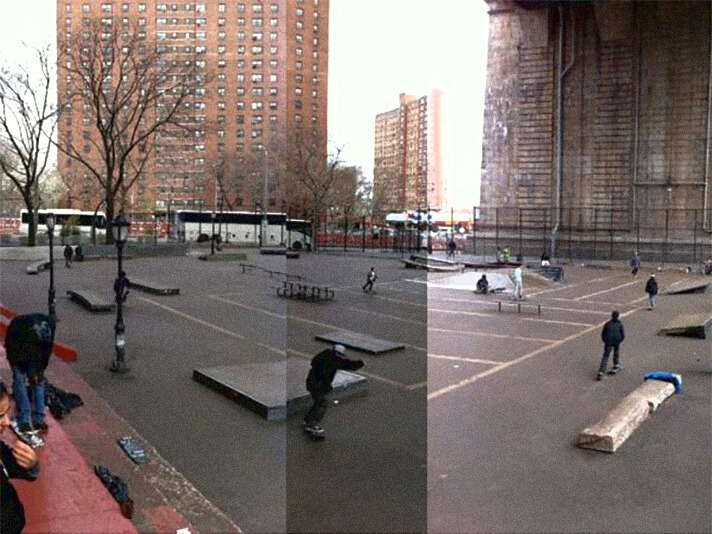
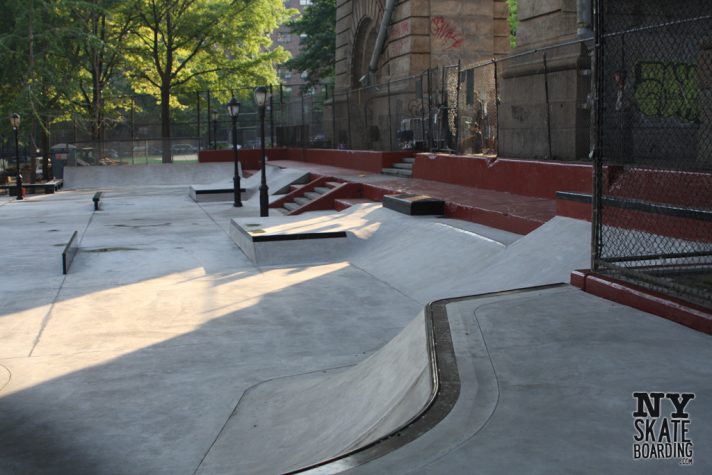
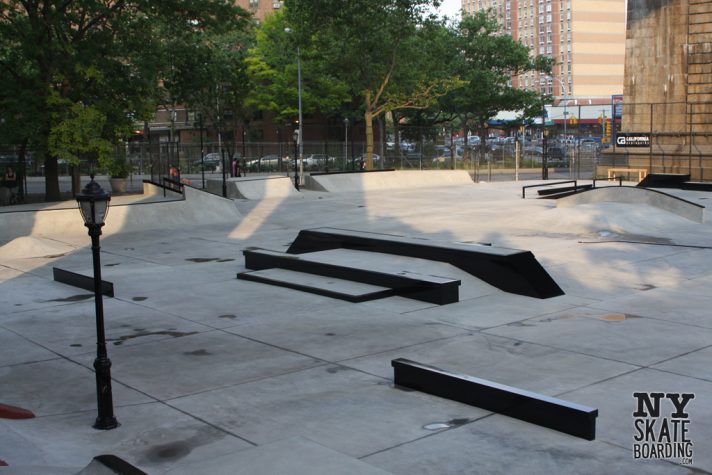
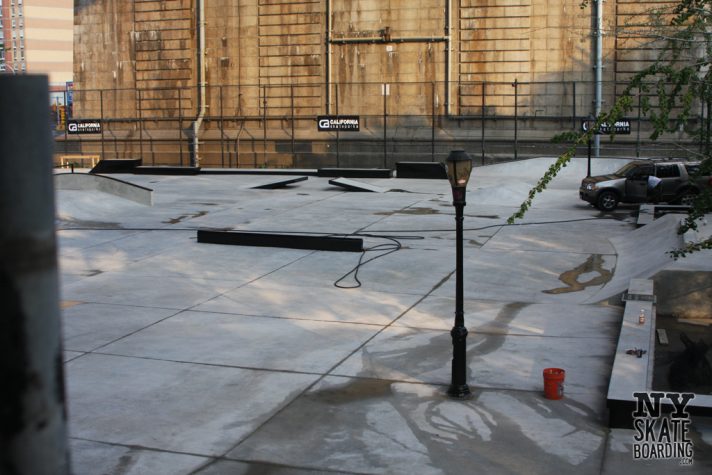
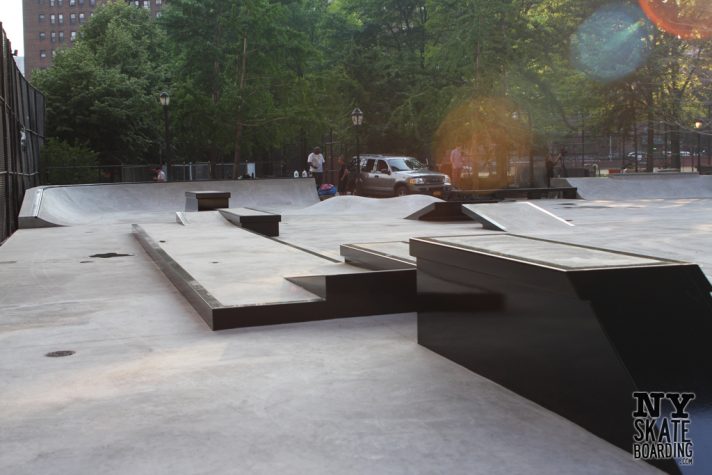
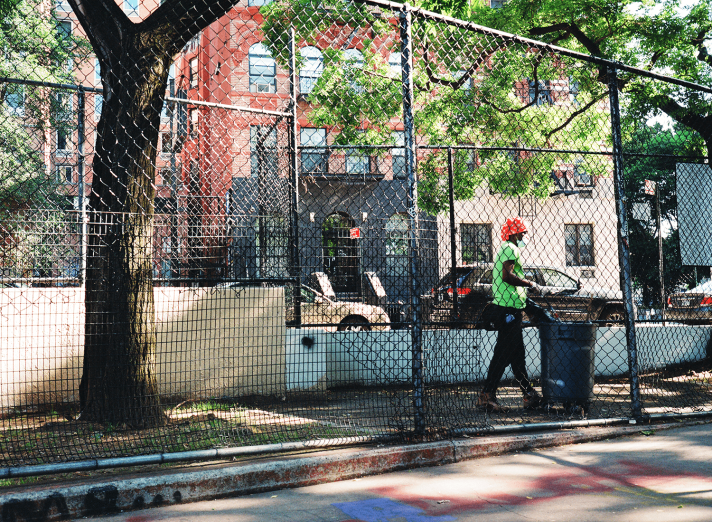
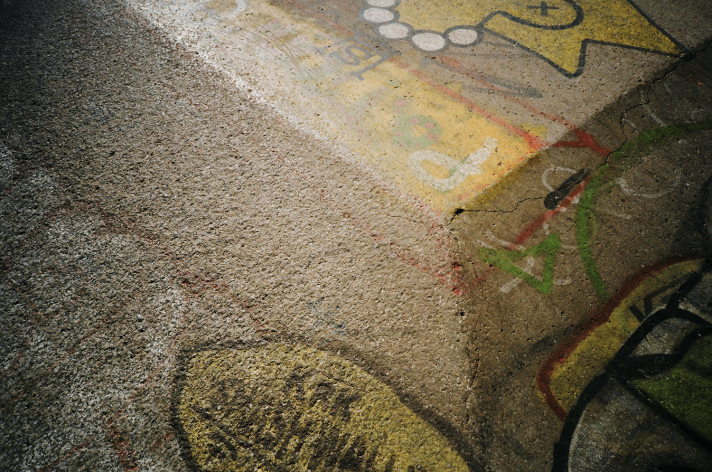
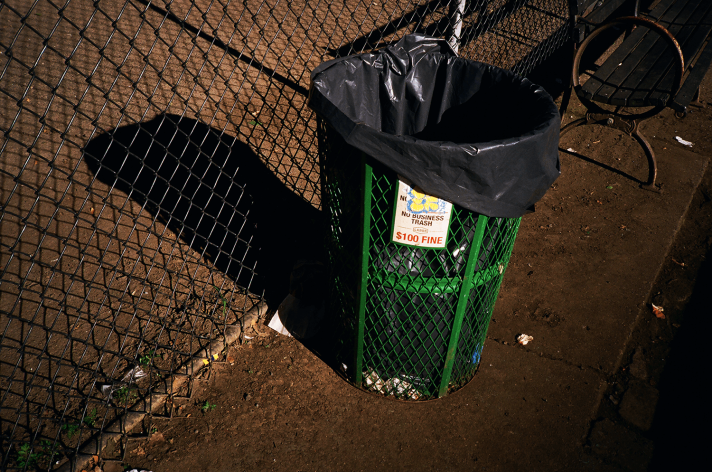
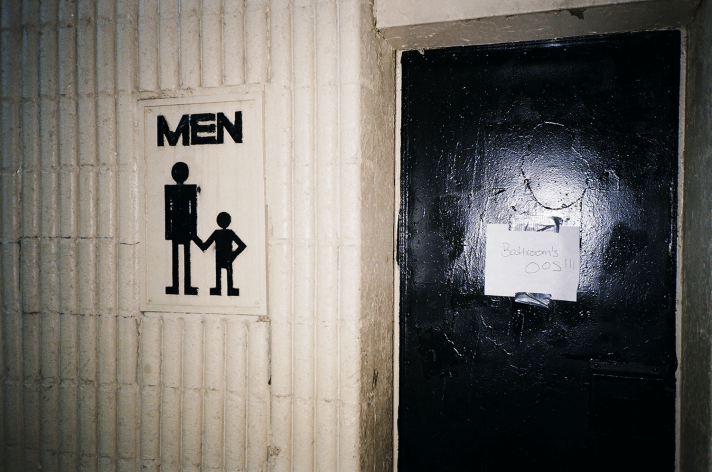
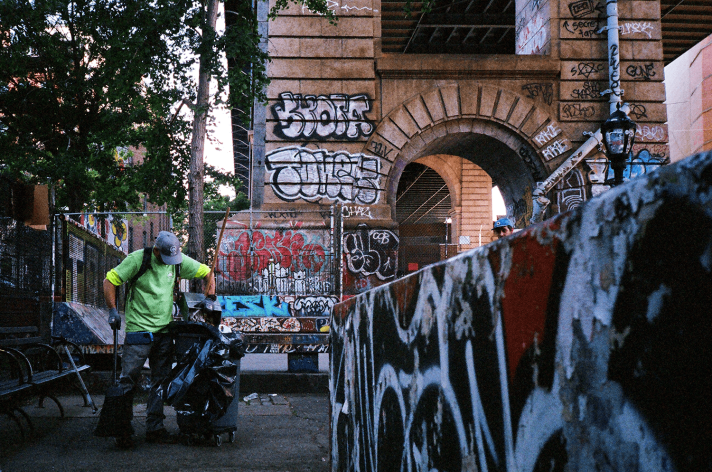
enjoyed this, keep it up!
There’s a typo. You say littler instead of litter
Fixed, thanks Smacky.
Really well done – shouts to Nestor, blessings to QS
nice work – really appreciated the background on fat kid too. explains a lot of the awkward obstacles. but hey, we got a skatepark.
Wow – major shout out to the LES cherub that is Nestor. He deserves a plaque on those beautiful red steps.
This is really well-written! Good job, great research, I appreciate all the different sources and perspectives, hearing the inside baseball re: Fat Kid park. LES was a game changer for NYC skate culture, I agree with Naquan it was awesome pulling up and watching Tyshawn glow up. Even all those kids from the Powell video, theyre all grown af and shredding now!! Big ups <3
Excellent article and journalism
Shoutout Nestor!
This was the perfect mix of journalism and story telling. Nestor was such good subject to tell the current state of LES. The brief history of the many phases of the park was really insightful. It brought me back to skating those old LES obstacles. Well done Ian Browning and Christian!
love reading these articles